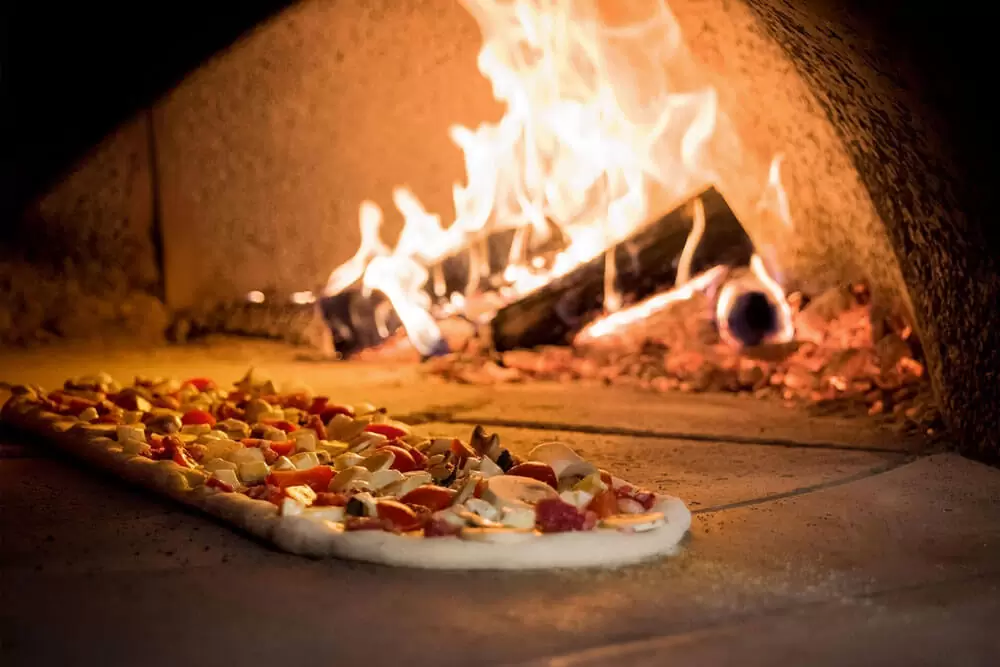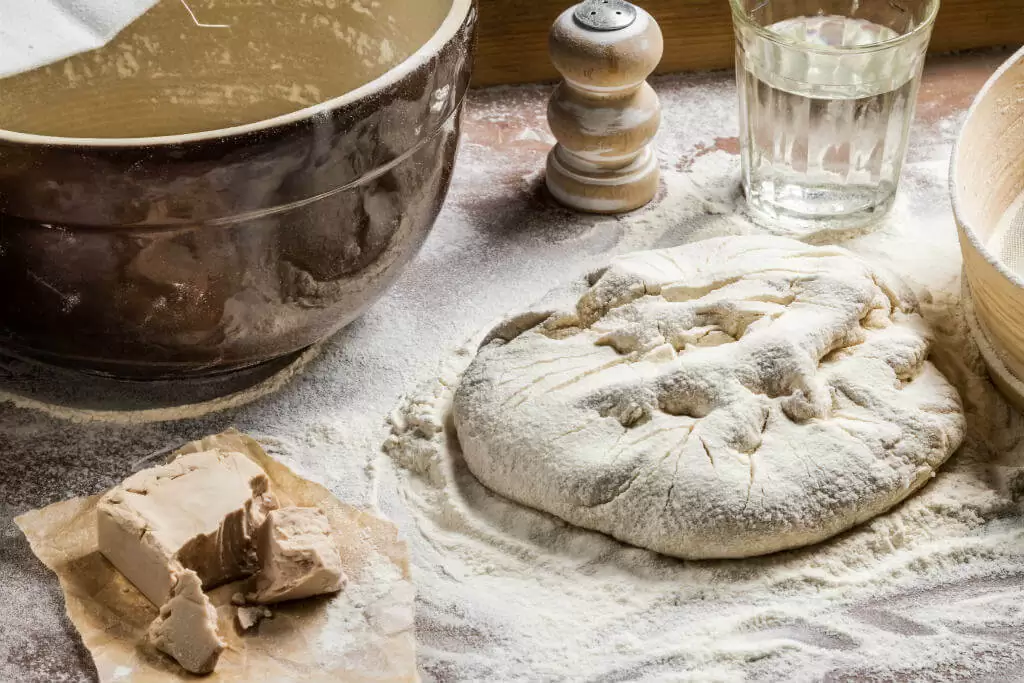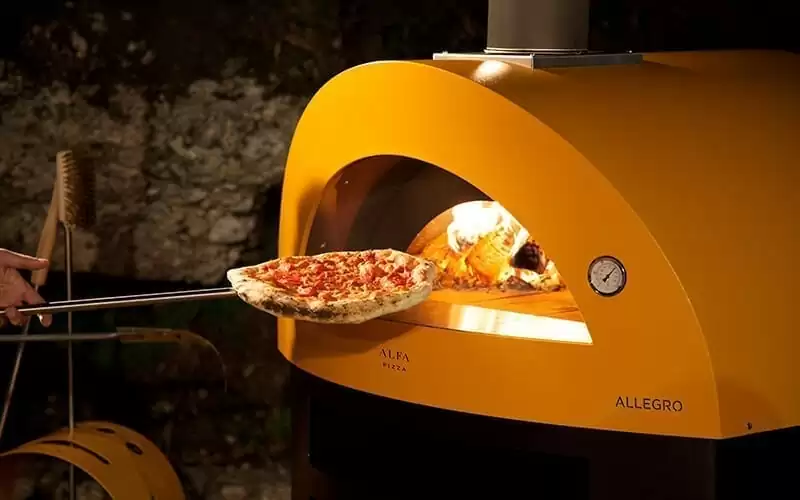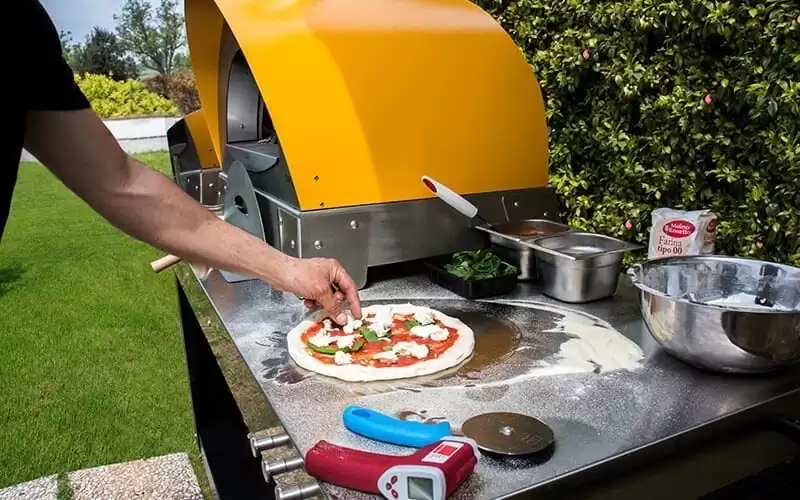The art of Neapolitan pizzaiolos made the Unesco’s Intangible Cultural Heritage of Humanity list, but even making a good home-made pizza is nothing to sneeze at.
Anyway, between a pizzeria and a home kitchen there are many differences which concern all the phases of the process and will inevitably affect the finished article. Here we will pinpoint them and supply you with some handful tips for making pizzeria-quality pizza at home.
But what kind of pizza are we talking about here?
Home-made pizza has certainly always existed even though granny’s recipes that were handed down through generations are nowadays replaced by internet searches. But the Web information overload brought about so many infinite variations on dough making, rising times, tools and techniques to use that finding your bearings is an uphill struggle.
Making pizza is surely an art, not at all an exact science and preparing its recipe at home adds something uncontrollable to the process when you run up against problems such as the lack of fully-equipped professional kitchen.
To start with, Neapolitan pizza is hand-stretched and cooked in a wood-fired oven without any kind of pan. So, lacking the wood-fired oven, no true Neapolitan pizza. Obviously, you can make delicious pizzas with a gas-fired or electric oven but in no way will they meet the standards of authentic Neapolitan pizza.
That said, the point is to figure out which kind of pizza you can make at home: there are endless variations of pizza born of cross-pollination of different Italian gastronomic traditions. Pan pizza is a really good alternative to classic one, it’s everywhere and super tasty in Italy and even though both have almost the same ingredients, they are altogether different.
Let’s see how to tell them apart:
- Different recipes for the pizza dough (hydration i.e. the amount of water contained in the pizza dough and different ingredients such as sugar or olive oil).
- Different times and techniques in dough kneading and fermentation.
- Different temperatures and cooking times.
- All toppings at one fell swoop or according to their cooking times.
To sum up, pan pizza is more suitable for home cooking because it needs lower temperatures while the classic one requires a high-performing oven attaining temperatures of 300°-350°C (600°F) , far beyond a home oven reach.

Which are the differences between a home-made pizza and a restaurant pizza?
Let’s now have a look at how you can make a pizzeria-quality pizza at home. Basically, main differences boil down to the availability of kitchen tools to help you cook like a chef that you can hardly have at hand in your home. Three main appliances stand out:
- the dough mixer: the biggest pizzerias use about 250 pounds of pizza dough per day and making it by hand is unthinkable whether for reasons of time or practicality. In addition, the frictional energy of the mixer causes the dough to heat and favour its rising. Normally the amount of heat generated by the appliance is reported in the technical specs and the most expert pizza makers rectify it by controlling the water temperature of the dough. Home-made pizza needs less dough and consequently little heat is created during the mixing process.
- the refrigerator: the refrigerator is the indispensable appliance for storing food. Commercial refrigerators are large and high-performing products often going hand in hand with cold rooms. The fridge is key to the maturation of the dough as the cold slows down fermentation and stops it altogether at 3°-4°C (40°F) thus lengthening dough development (leavening and maturation are two distinct processes as you can read in this article).
- the oven: the oven is the throbbing heart of a pizzeria. Wood-fired, gas-fired or electric as long as it can provide tip-top performance. The wood-fired oven reaches very high temperatures (450°-500°C) (900°F) and gives food its characteristically smoky flavour. Gas-fired and electric ovens can’t achieve as high a temperature as the wood-powered oven’s (pizza is usually cooked at 300°-400°C) (600°F) but they have the advantage of being more practical (they don’t have to be fed with firewood and can be cleaned up in double-quick time).
Home ovens barely reach 250°C (500°F) even though the latest models can achieve 300°C (600°F) with a function for baking pizzas.
4 ways to make a pizza like a pro
Let’s have a look at how to make pizza in a few steps. For every step we will emphasize the differences between a home-made and a restaurant pizza and we will give you, en passant, some tips to improve the end result.

1- The pizza dough
Let’s start by saying that the perfect recipe doesn’t exist. The best pizza dough is the one that fits in with the other elements necessary to its creation: temperature, time and a good hand:
- Dough, fermentation and oven temperatures are crucial for a successful pizza.
- Time to make dough, to let it rise, to spread it and to bake it.
- A good hand to knead it, to divide it and to stretch it.
Remember that behind a good pizza dough recipe there are always choice, fresh ingredients.
At the beginning pizza was a humble dish that shared its ingredients with bread: flour and water. Using a bad water or a poor flour can easily hinder your efforts to make a great pizza. For instance, tap water may not be the best choice if it is hard or chlorinated because it doesn’t go well with yeast (in this case you’d better opt for bottled mineral water).
As for the flour, there’s a whole world at your feet. Currently many mills produce speciality flours that until a few years ago were targeted at professionals and were hard to come by for the general public. Besides, thanks to the growth of the Internet, many manufacturers have expanded their market by exploiting the home-made bread and pizza trends without considering that nowadays even grocery stores offer a wide assortment of flours.
To make a pan pizza at home you’d better use Italian Tipo “0” wheat flour with a strength (W) between 250 and 310 and a 10-12% amount of proteins. Pan pizza dough needs a hydration of more than 20% than that of the common pizza dough. Pound for pound, a strong flour absorbs more water than a weak one and needs longer maturation times. For that reason, you should slow down rising by resting the dough into the fridge and align dough maturation and fermentation times.
In mathematics, changing the order of the operands doesn’t change the result but pizza is not maths and changing the order of the ingredients does affect the result. First of all, put yeast on one side and salt on the other because salt can indeed kill the yeast. Then you can add some sugar or honey to feed the yeast. Don’t worry, a small amount of it won’t change the pizza flavour and it will actually allow the dough to rise well and result in a soft pizza with crispy edges.
You can follow two ways to mix the ingredients:
- Dissolve the yeast into the water, then add half the flour, the sugar and mix. Keep mixing while drawing the rest of flour in and finally add the oil and salt.
- Mix yeast and flour, add half of the water and sugar and stir. Keep mixing, gradually add the rest of water and finally oil and salt.
When the ingredients are well-mixed, place the dough onto a flour-dusted work surface and knead it until smooth. Let it rest for 10 minutes covered with a wet cloth or cling film. Split it into equal-sized balls: every ball will be a pizza. This brings up the question: how much pizza dough to put into a pan? In this giallo zafferano.it article, the pizza chef Gabriele Bonci puts forward a basic maths formula: area of the pan x 0,6. Hey take it easy, you don’t need precision kitchen scales, after all pizza thickness is a matter of taste! In case you opt for a rosemary or onion focaccia, allow for a heavier dough than that normally used to make pizza. A greater thickness prevents focaccia from drying out during baking considering that in this recipe you don’t have toppings that release their moisture to the crust. Now work the dough balls until smooth but don’t over-knead it to prevent gluten from taking too much strength. Then put the dough balls for a few hours in the bottom of the fridge in oiled air-tight containers or covered with a cloth or cling film.

2- Stretching pizza dough
Take the dough out of the fridge at least a couple of hours before stretching it. Dust some flour over the work surface and place the dough on it. If you have round pans, the dough balls should weigh between 250 and 300 grams (9-10 ounces). Sprinkle some flour over and under the dough and begin to gently stretch it with your fingertips from the middle outwards, widening it into a flat disc. Softly lift the dough to shake off the excess flour and place it onto a greased pan.
If you use rectangular pans, account for a greater amount of pizza dough and maybe consider using a rolling pin (keep your lips sealed about it, you don’t need to tell it to a pizza chef!). Stretch the dough while flouring both sides of it and then place it onto the pan giving it a slight wobble to remove the surplus flour. Now you can let the pizza rise a third time in the pan before topping it. As already mentioned, rising times depend on so many factors and much perseverance, so keep at it because practice makes perfect.
3- The topping
Now it’s time to top your dough. Don’t put all the toppings at the same time. First cook a red or white dough for half the cooking time keeping in mind that most toppings don’t bake in the same time of the crust. So, for the pizza bianca we brush the crust with extra virgin olive oil and a pinch of salt. For the pizza rossa, we cook the tomato passata in a saucepan with a glug of extra virgin olive oil, salt and oregano for about ten minutes and ladle the sauce on top of it.
The dough will be baked in five minutes and by that time you can put all your toppings but the mozzarella that will be added in the last two minutes. Before that, mozzarella must be sliced and drained for an hour, two if it’s buffalo mozzarella, to prevent it from releasing too much water during cooking.

4- Cooking pizza
Follow these tips to cook a home-made pizza as good as that of a pizzeria:
- Preheat the oven to the max for at least an hour on the conventional oven setting.
- Place the pan on the very bottom of the oven
- Use a pizza stone (or a top-notch refractory oven) that retains and releases heat to the pan more efficiently.
- Check the pizza bottom by using a fork to lift it from the pan. If it’s undercooked, remove the pizza from the pan and place it on the stone; if, on the contrary, the bottom is done but the toppings are undercooked, put the pan on the top rack and turn on the grill.
The definitive tips for making pizza like a pro.
Many factors contribute to making as good a home-made pizza as that of a restaurant. Here are four tips for producing some mouth-watering pizzas:
- Choose high-quality ingredients
- Try to make dough over and over again until you get the hang of it. Find the right balance between fermentation and maturation times.
- When stretching pizza dough, work it gently but quickly.
- Get to know full well how your oven works.
If you have already reached a good level and you want to improve on it maybe you could entertain the idea of upgrading to higher-end ovens. The market has been growing fast lately, and many models of high-performance semi-professional ovens are yours for the taking.
If you have an outdoor area, you could bet on a wood-fired oven to make the real Neapolitan pizza…and of course so much more!
Then, keep us posted on your progress… and eat pizza!


